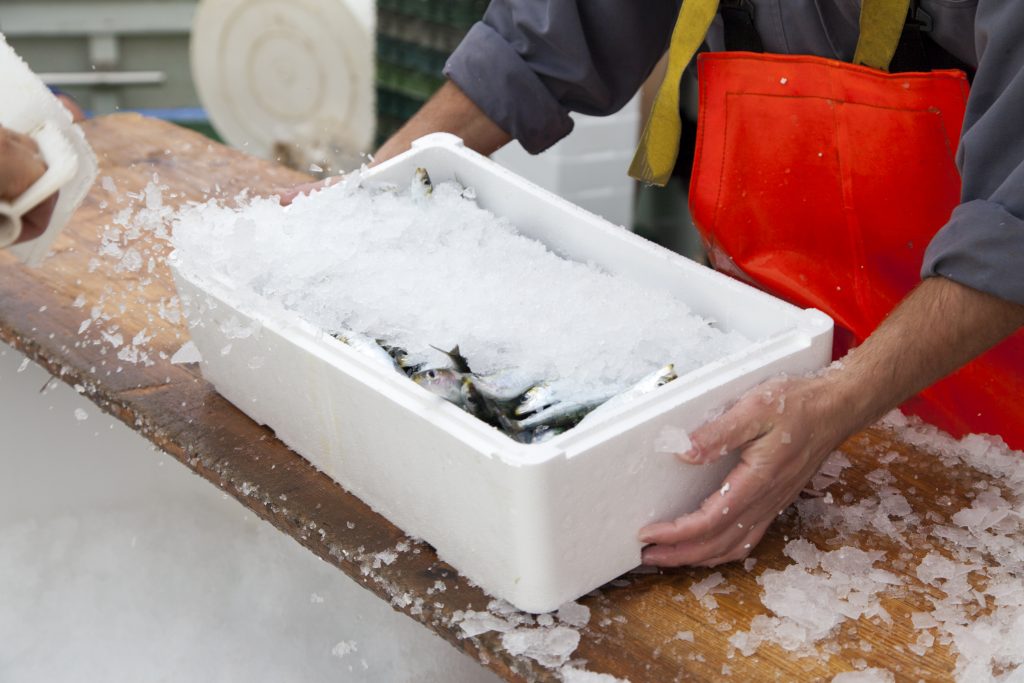Ways to control physical and biochemical alterations that decrease the quality of tilapia fillets
Fish meat is a an easily spoilt food because post-mortem physical and biochemical alterations modify its characteristics and decrease rapidly its quality. Furthermore, it contains nutrients that benefit the microbial growth. The continuous growing demand of fresh tilapia fillets underlines the necessity for shelf life prolongation of fresh fillets.
One of the most effective methods is the use of modified atmosphere (MAP) and vacuum packaging. MAP is reported as a mixture of 40% CO2 and 60% N2, 60% CO2, 10% O2, 30% N2 or 50% CO2/50%N2. Chemically treated fish with 1% acetic acid, packed under a 60%CO2/40%O2 MAP and vacuum packaging can be stored at 40C for 20 days. Vacuum packing combined with acetic acid promotes an exceptionally good chemical, microbiological and sensory stability. A prolonged shelf life (up to 23 days) can be also achieved for fillets packaged in 50% CO2/50%N2 (MAP) and stored at -10C. The only reported problem of MAP is the discoloration of the tilapia fillets 6 days after packaging, a major factor that influences the retail purchase decisions.
The packaging materials which are used for MAP are a combination of different substrates. The film permeability and transparency can affect the shelf life of the product. Four different polymeric packaging materials were assessed: linear low density polyethylene/ethylene vinyl alcohol/linear low density polyethylene (LLDPE/EVOH/LLDPE, 60 μm); oriented nylon/polyethylene (ONy/PE, 70 μm); oriented polypropylene/polypropylene (OPP/PP, 60 μm); and (4) high density polyethylene (HDPE, 50 μm). The two most effective materials are LLDPE/EVOH/LLDPE and ONy/PE, which can double the shelf life of MAP tilapia fillets. However, ONy/PE is recommended because it is good value for money. The effectiveness of MAP is depending on one more factor, the good manufacturing practices before, during, and after the filleting process.
Another method that inhibits or delays the microbial growth of fresh tilapia fillets is the use of chitosan edible coatings. Some coatings are enriched with antimicrobial promoters that delay degradation and preserve freshness. Coated films could be produced from lipids, proteins, polysaccharides or combined materials. Chitosan is a polymer extracted from chitin, which is obtained from shrimps’ shells. It is not toxic, consequently is suitable for human consumption, as well as, it displays good gel formation. A combination of chitosan (C) with carvacrol (CAR) (C 2% + 0.125% CAR; C 2% + 0.25% CAR ) has been proposed as good alternative method for quality and safety preservation The shelf-life of chitosan-treated, filleted tilapia (stored in ice) can be extended to 12 days, considering that the untreated ones have shelf life of 6 days. The chitosan coating has proved to be effective in increasing the shelf life of liquid smoked tilapia fillets, too.
As an alternative to the chitosan coating, bioactive film constituted of agar, integrating green tea extract and probiotic strains (Lactobacillus paracasei L26 and Bifidobacterium lactis B94) has been proposed by (Lacey et al.,2014). These films are able to extend shelf-life for a week and boost the beneficial lactic acid bacteria content in fish. The use of antimicrobial metabolites produced by Lactobacillus can improve the biochemical quality criteria, control the microbial load and enhance the safety of frozen tilapia fillets even during 45 and 90 days of storage.
Various natural preservation methods have been used for the prolongation of the shelf life of fish fillets, such as salt. Sodium chloride prevents deterioration, but at the same time it restricts the activity of endogenous antioxidant enzymes. For that reason, food manufacturers use synthetic antioxidants. The problem is that these antioxidants may form toxic compounds, that put the consumers health in danger. Consequently, natural antioxidants must be explored. The extract of rosemary, a natural antioxidant, demonstrated its protective abilities during the frozen storage, especially when it is used before the salting process. Also, essential oils extracted from Thyme and rosemary can reduce the oxidative processes, between 53 and 96.5%, increasing the shelf life of the treated fillets for 9 days longer than the untreated ones.


